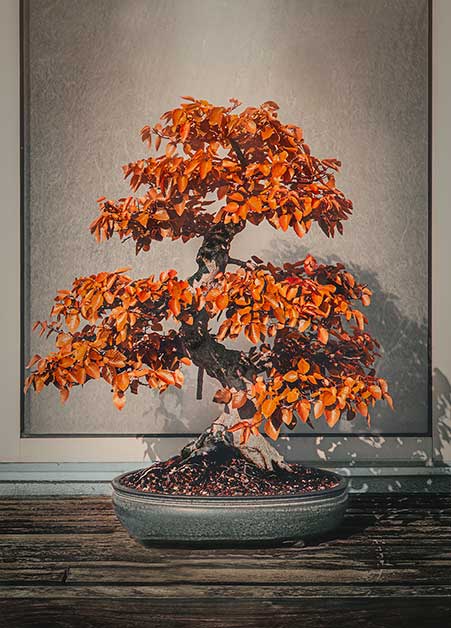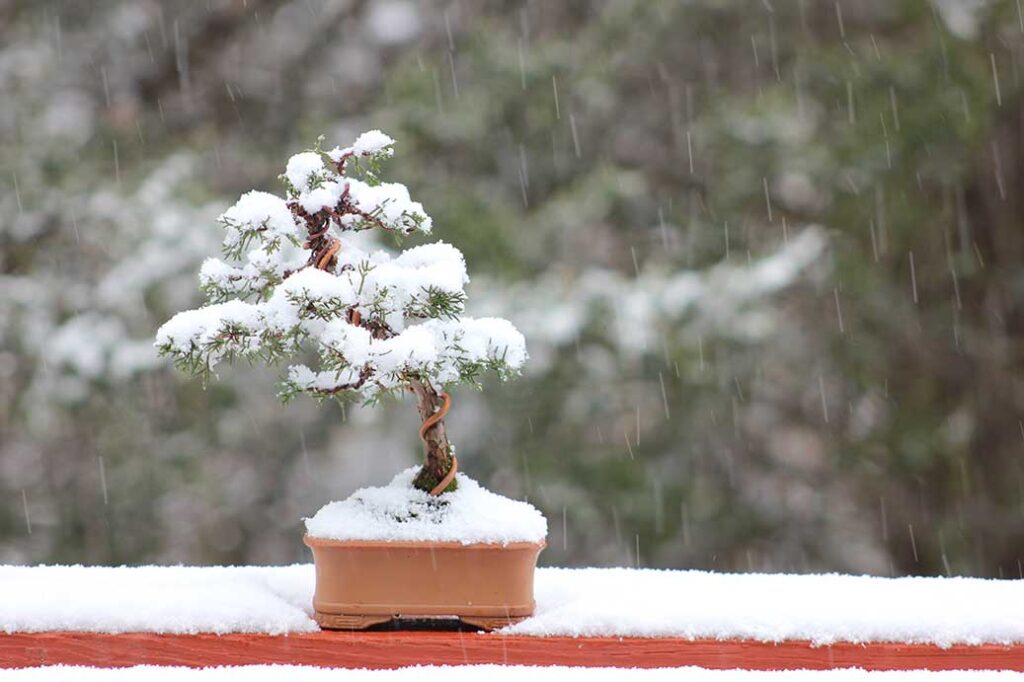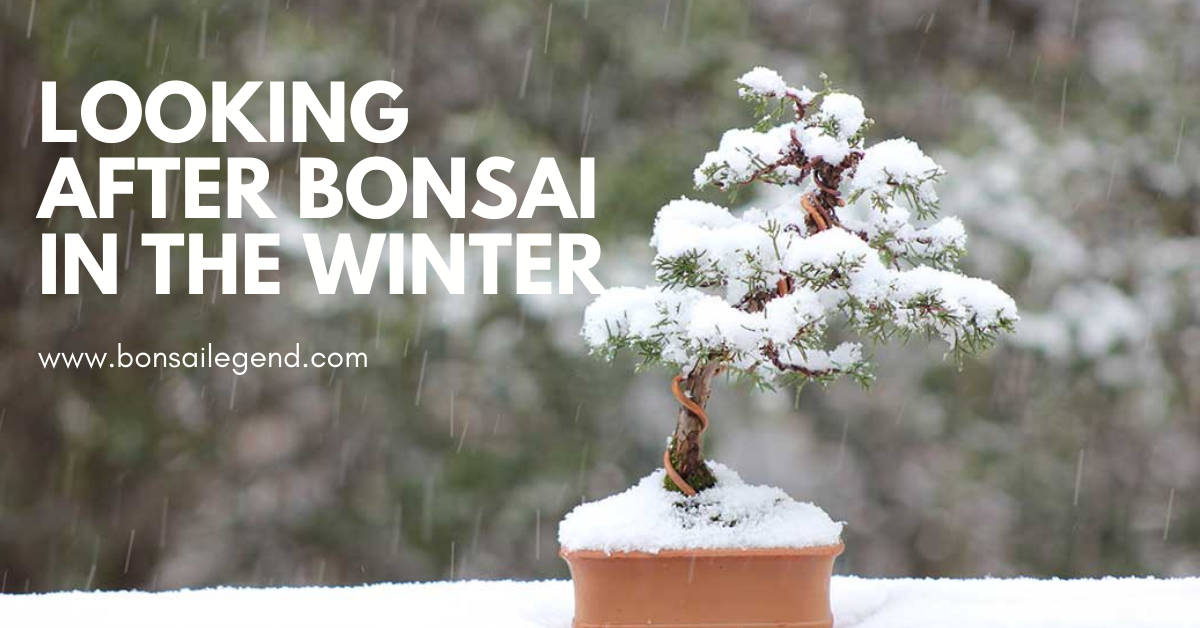During September, the days begin to become shorter, and little by little the temperature starts to drop, this tells you it is time to start preparing your Bonsai for the winter months to avoid losing them through the rigors of winter.
The first thing to do is to start increasing the time between watering and to use a fertilizer that contains less nitrogen and more phosphorus and potassium.
This fertilizer will strengthen the roots for the coming winter and increase the storage capacity of the tree’s reserves which are both a top priority for Bonsai during the winter season.
Through September and into October some species have a new growth peak that must be controlled with constant pinching.

Autumn is an ideal time for transplanting trees, especially evergreen ones, such as pines, yews, cedars, junipers, etc. It is also the time for wiring, pruning, carrying out dry woodwork, and all those jobs that we like the most and draw us to the way of the Bonsai.
This is also a time to start modelling those seedlings that you have been conditioning since spring and a time of great activity when you can enjoy the colours of autumn with its ochre and reddish tones.
In November, the deciduous trees will begin to lose their foliage and at this time you should start to reduce the fertilizer. By the end of the month, you should think about any layering that you want to make in spring and if you have enough roots. November is also the time to apply horticultural winter oil, to kill any insect eggs deposited in the previous season, and to suspend any further fertilizing.
With all this done, we have reached December and with it, the most intense cold period will arrive, you should water your Bonsai less frequently, and preferably in the morning. This is to ensure that when the intense cold of the night arrives, the water should be sufficiently absorbed to not freeze. You should also prepare the place where you will protect your trees during the coldest period of winter.
If your Bonsai are kept inside you should ensure they are kept in an area with a lot of natural light. Due to the decreased hours of sun, and sometimes the entire lack of, this can at times be difficult so be sure to keep an eye on your trees. If your plant is showing signs of distress such as long internodes or the leaves starting to pale, you know to move it. Likewise, do not place your Bonsai near a heat source, such as a radiator, as this will dry out your tree.

If you keep your Bonsai outside, it is best to place your trees under shelter or in some type of greenhouse. It does not have to be a complicated thing; a good polystyrene box (white cork) will be a good place to put your trees in because the polystyrene will protect the container from the cold and avoid the freezing of the roots
Another form of protection is to wrap the pots in rags to protect them from the cold and not to place them directly on the ground. Always put something wooden between the pot and the ground or a table that protects the plant from ground frost.
You can also protect your Bonsai with bubble wrap, as the air in bubbles forms a barrier against the cold.
These will all be fine methods if you only have a few trees, however, if you have more it will be worth investing in PVC covered garden shelves. These let in the light whilst also preventing the cold wind from entering. They also keep the air inside very humid which reduces again the amount of time you need to water your Bonsai. However, ensure to remove your trees from this environment with the temperatures start to rise as it can get very hot in these structures which will harm your plants.
From the end of December and throughout January and February you need to also keep an eye on night frost whilst keeping your trees outside. Make there are plenty of drainage holes and water does not accumulate on or around the soil of your Bonsai. This water can freeze and will be the death of your plant’s roots, and eventually the plant itself.
So, little by little you will reach the end of February, and winter will be about to end. With a little work, good preparation, and following the above methods you should emerge with little to no damage to your trees. And as you enter into Spring your caution will be rewarded by new shoots.

